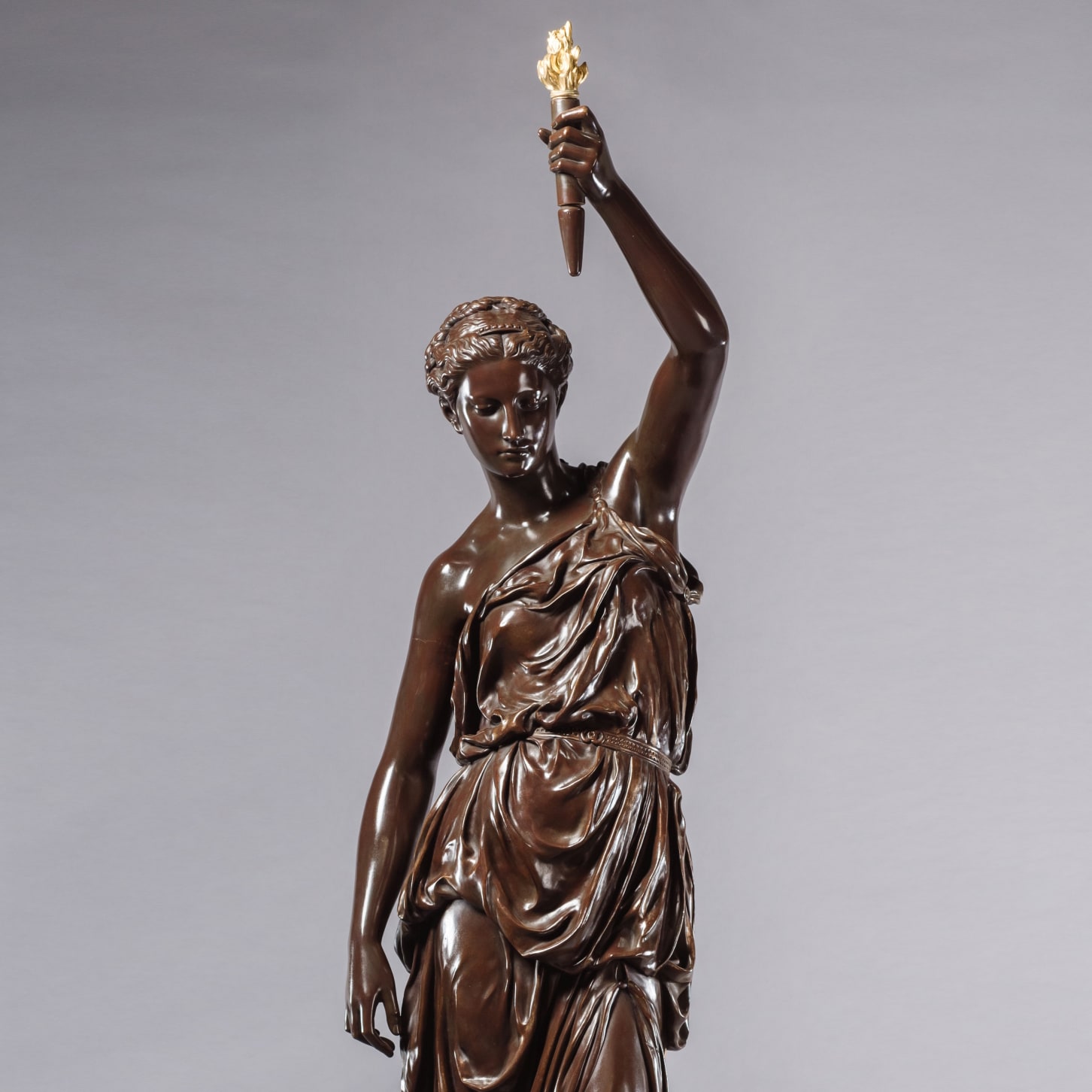Alexandre Falguière
A Patinated Bronze Figural Torchère Cast by Barbedienne
£22,000
A Patinated Bronze Figural Torchère Cast by Barbedienne, after the Model by Alexandre Falguière. Signed to the bronze base ‘FALGUIERE’ and inscribed...
Dimensions
Height: 212 cm (84 in)Width: 40 cm (16 in)
Depth: 40 cm (16 in)
Description
A Patinated Bronze Figural Torchère Cast by Barbedienne, after the Model by Alexandre Falguière.
Signed to the bronze base ‘FALGUIERE’ and inscribed ‘F. BARBEDIENNE. FONDEUR’. With serial number WB 96762 .
Barbedienne illustrates a drawing of this torchères on page 63 of his 1886 catalogue ‘Bronzes D’ Art’. It is listed as ‘Porte-Lumière, style Renaissance’ also indicating that it was modelled by Falguière; a companion piece also available modelled by Paul Dubois.
The original model of the present bronze was delivered by the artist to Ferdinand Barbedienne in 1867, and the two entered into a contract for the production rights. However it was not until 1876 that the Renaissance-revival figure was produced by the fondeur. Having previously contracted a very similar model by the artist Paul Dubois (1829-1905), Bardienne decided to pair the two, adapting them into torchères, and offering them in four different scaled versions. A successful model, the firm continued production of Deux femmes debout, style Renaissance until 1911 (see F. Rionnet, Les Bronzes Barbedienne: L’oeuvre d’une dynastie de fondeurs, Paris, 2016, p. 447). An example of the singular Falguière torchère is in the musée national du château de Compiègne.
French, Circa 1880.
Date
Circa 1880
Origin
France
Medium
Patinated Bronze
Signature
Signed to the bronze base ‘FALGUIERE’ , 'BARBEDIENNE. FONDEUR’. With serial number WB 96762 .
Alexandre Falguière studied under Jouffroy at L‚’Ecole des Beaux-Arts, exhibiting for the first time at the Salon in 1857. He won the Prix de Rome in 1859 and continued to find extraordinary success at the International Exhibitions of the period including the Paris Universal Exhibition of 1867 where he won a first class medal. He was awarded the Ordre National de la Légion d‚’Honneur in 1870.
As well as private commissions he undertook a number of important commissions for the French state. In 1878 he was asked by the state to realise the Triomphe de la République, placed in 1881 at the summit of the Arc de Triomphe (taken down in 1886). His most important international work was the Lafayette monument in Washington D.C.















 Print
Print


